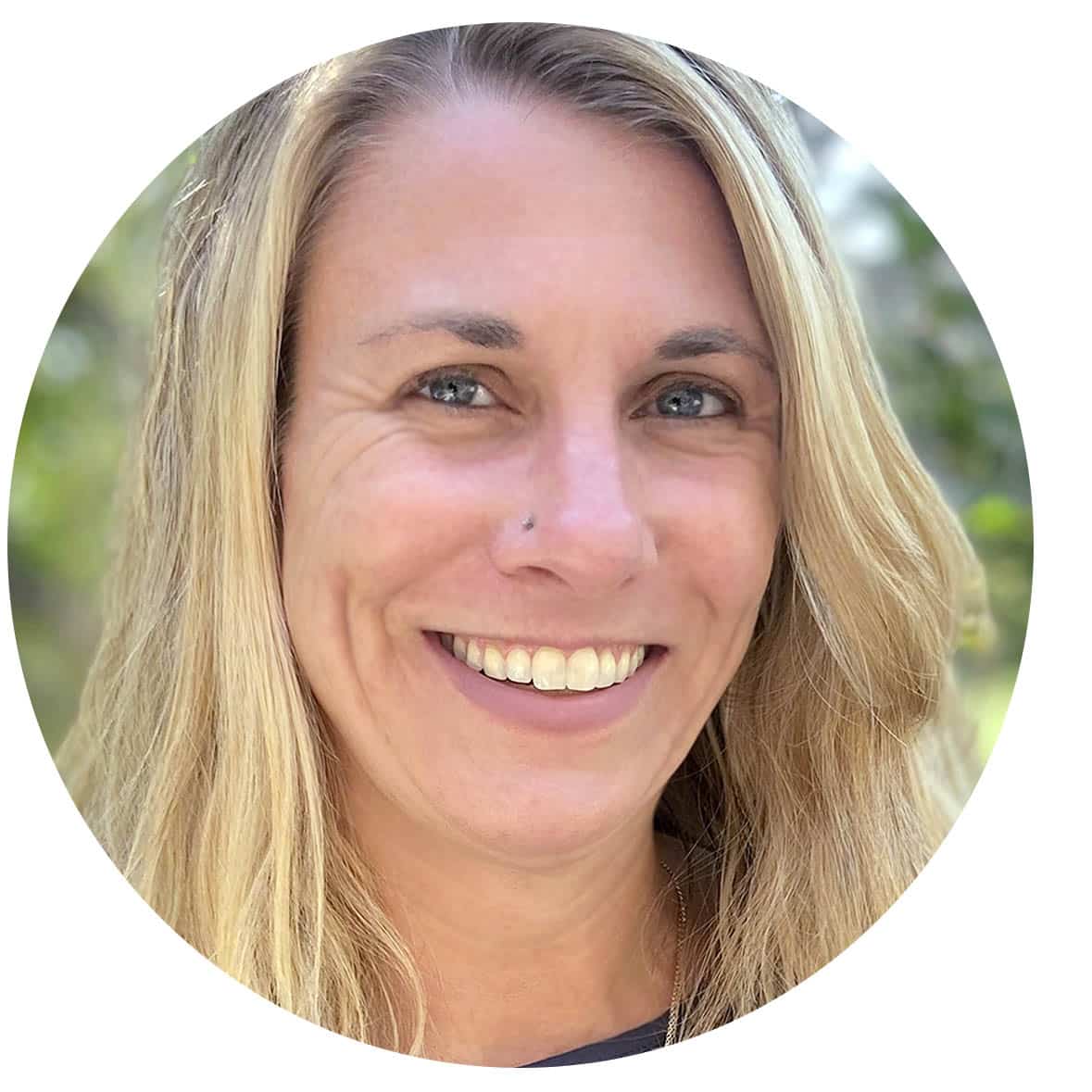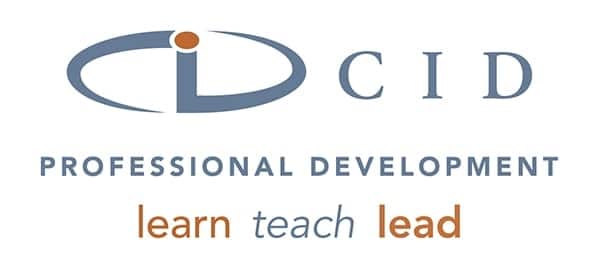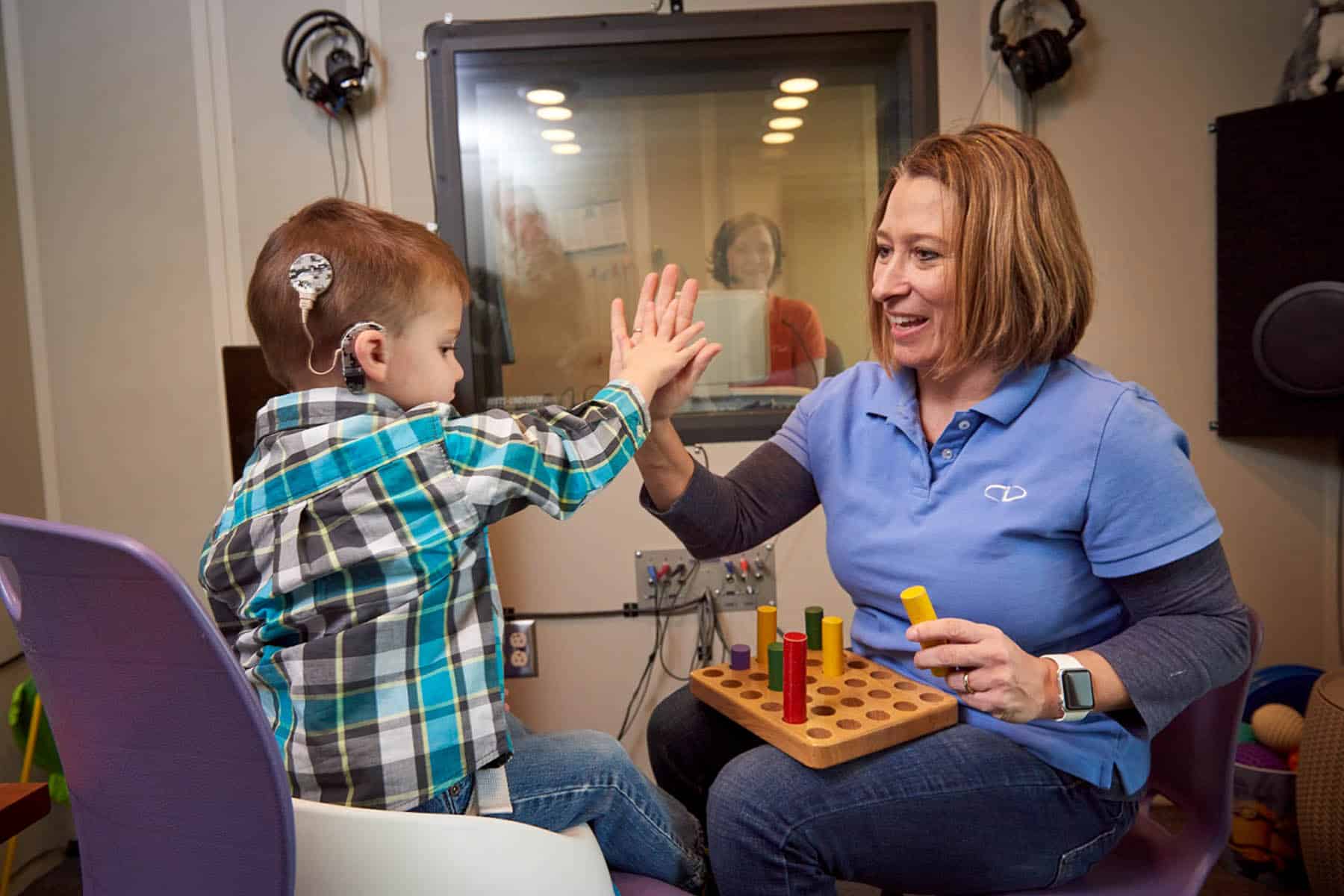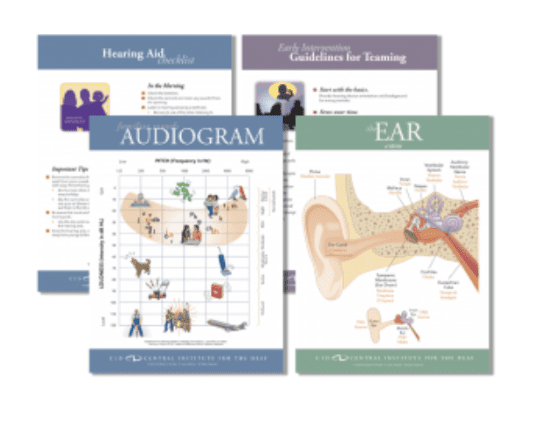In honor of Audiology Awareness month, we want to highlight the importance of establishing and maintaining a relationship with a child’s audiologist. The pediatric audiologist plays an integral role in a child’s development of listening and spoken language. It is important to understand how the audiologist supports the child on this journey and how other professionals on the child’s team, including the teacher of the deaf, the special education teacher and the speech-language pathologist can collaborate.
The audiologist’s role |
The school staff’s role |
| Fits the child with a hearing device(s) and provides on-going programming and mapping
When a child is diagnosed with a hearing loss, they are (ideally) fit with the appropriate device(s) quickly. The audiologist is responsible not only for this initial fitting but also for the ongoing programming and/or mapping of the device(s) to ensure that the child has optimal access to sound. |
Understands how the device(s) works and has basic troubleshooting knowledge
Getting fit with a hearing device(s) is an important first step in developing listening and spoken language; consistent use of a working device(s) is the next step. Reach out to the audiologist and/or parent to learn how the device(s) work(s). Know basic troubleshooting to make sure the child has access to sound throughout their day. |
| Performs audiologic evaluations
It is essential that a child with hearing loss receives an annual hearing evaluation. This evaluation provides information about how the child is hearing both with and without their device(s). The information obtained from this evaluation is then used to determine if programming adjustments to the device(s) are needed. |
Is an active observer and reporter of the child’s auditory skills
It is important to be aware of the child’s current listening skills, in both unstructured environments (e.g., recess, lunch) and structured environments (e.g., classroom instruction, speech/language/auditory sessions). If any changes in the child’s listening skills (ex: not responding to their name or missing Ling sounds) are observed, it is important to contact the audiologist and the parents. |
| Provides information to help set realistic and attainable listening and spoken language goals
The information that the audiologist gains through the child’s hearing evaluation can (and should!) be used to help team members set realistic speech, language and listening goals. The audiologist supports the team by interpreting testing results and providing guidance on appropriate goals. |
Is an active learner in understanding audiologic information
Audiograms and audiologic evaluations contain important information but can also be confusing to an unfamiliar reader. Reaching out to the audiologist for clarification is key in order to truly understand the child’s hearing loss and recognize the support(s) they need. |
| Determines the need for assistive listening devices (ALDs)
Classrooms are noisy environments, and the background noise of other students talking or construction outside can hinder the child’s ability to hear classroom instruction. One type of ALD, an FM/DM system, minimizes background noise and sends the speaker’s voice directly to the child’s hearing device(s). The audiologist determines if the child would benefit from an ALD, decides which ALD would be best and then programs this device to be compatible with the child’s hearing device(s). |
Uses the FM/DM system throughout the child’s day and ensures others do, too
It can take time to make using the FM/DM system throughout the day a habit, but it is important. All educators on the child’s team need to know how the FM/DM system works (e.g., how to mute, pair with technology, use during group work) and the importance of consistent use.
|
| Provides the foundation for auditory learning
In order for a child with hearing loss to become an auditory learner (meaning they are able to learn new information through listening alone), they must have access to sound. The audiologist works to provide the child with optimal access to sound through ongoing audiologic management. |
Capitalizes on natural listening opportunities and provides auditory training
Having access to sound is the first step for the child to become an auditory learner; learning how to make sense of these sounds is the next step. The child must be immersed in a language-rich environment and participate in structured auditory training sessions to become an efficient listening and spoken language user. |
Consistent communication and collaboration between all members of a child’s educational team are integral to the child’s success. Each team member has a different perspective and area of knowledge about the child, and when this information is shared between members, everyone, especially the child, benefits.

Jessica Klein is a speech-language pathologist. In addition to working at CID, she has also worked in a public school setting, serving elementary-age students. Ms. Klein has co-authored several workshops, presented at a variety of professional conferences and written an online course about developing literacy skills in students who are deaf and hard of hearing.












